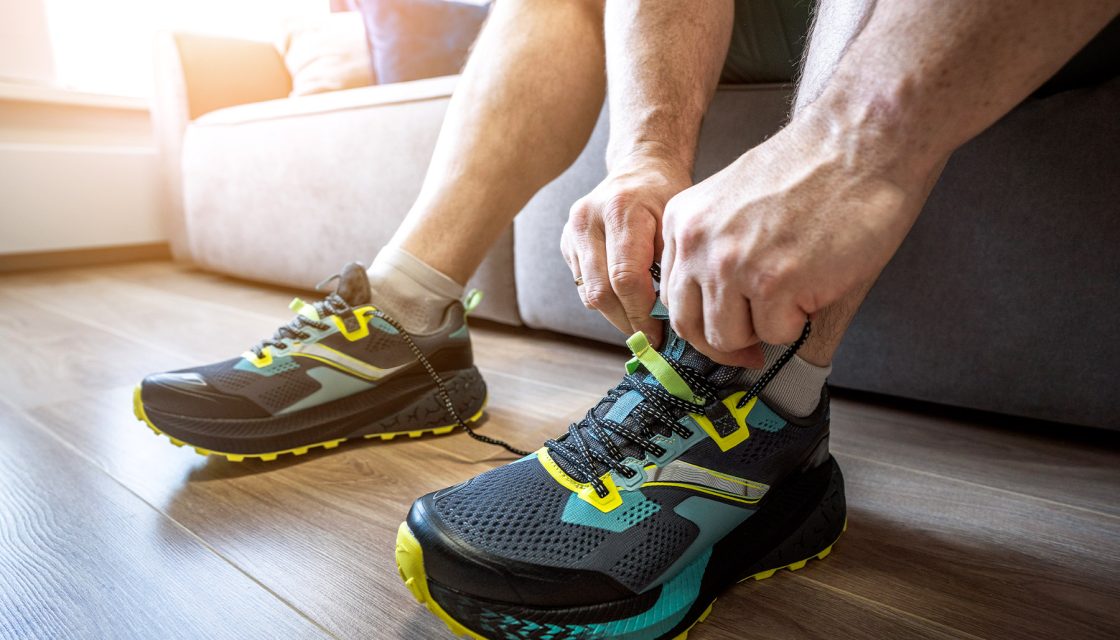
Adding some “spring to your step” may no longer be just a phrase when it comes to running shoes. Carbon-plated running shoes (sometimes referred to as “super shoes”) have been around since 2017 and have significantly reshaped what’s possible for long-distance running performances. Worn mostly by runners at the elite level to start, other runners quickly started to notice these special-looking shoes on the folks in the front. So, should they be your next purchase for race day? For my frequently running friend, Annie Silvia, they indeed were a recent purchase prior to race day, where she PR-ed the Madison (Wisconsin) Marathon.
Before we get back to Annie, let’s hear from Andrew R. Jagim, Ph.D., director of Sports Medicine Research at Mayo Clinic in La Crosse, WI. Below, he weighs in on whether the trend is worth the splurge.
What are the benefits of carbon-plated running shoes?
Okay, so you won’t technically find springs inside these shoes. But you will find the next best thing: a combination of light foam and a carbon fiber plate embedded in the shoe’s midsole. This modification not only provides support, but creates a bouncier platform to propel you forward with each stride, possibly improving all-important speed and leg turnover. “The carbon plate provides a biomechanical advantage. It helps to increase midsole bending stiffness, which can improve running economy, or the oxygen your body requires to run at a particular pace,” says Jagim. This ultimately leads to a lower physiological burden when running with these shoes. Shoes with a carbon fiber plate will also be lighter and stiffer than standard running shoes – again helping with the biomechanical advantage.
Are there any negatives to carbon-plated running shoes?
Cost, durability and stability are debated when pitting carbon-plated running shoes against your typical trainers. Around $200 appears to be a common price, give or take. And while the price tag is steeper in many cases, they also may be less durable than most running shoes. This is why some runners only pull them out specifically in preparation for and during a race. It’s smart to make sure they’re race-legal, too: Shoes must have a sole no more than 40mm and can only have one carbon plate per shoe, according to World Athletics rules. and last, there are questions related to long-term effects on joint loading and bone stress responses, says Jagim. This is due to possible change in biomechanical loading and musculoskeletal impact or stress.
Are carbon-plated running shoes worth it?
“Yes, but they probably only make sense for competitive runners to use,” says Jagim. For recreational runners, he recommends going more for comfort and durability. It’s also important to take note of your style of running. Shoes made for long distances will have more cushion and support as opposed to compact or tight shoes often used in sprinting. Don’t forget proper fit, either. It may be intuitive, but make sure to select a shoe that fits your foot’s length, width and level of arch support needed. There’s where your local running store comes in handy. Employees there will work with you on finding the right “fit” in a way that buying online never can. Sorry, Amazon.
Whether the effect of carbon-plated running shoes is real or just placebo for the average Jane or Joe, many avid runners are finding that extra propulsion forward worth the extra price. Built to enhance efficiency, they may just give you that extra push you’re looking for on race day … just don’t forget to train in them before race day too.
And now a final word from Annie, my carbon-plated running shoe newbie and bestie
“I felt like a bunny rabbit,” she told me about her experience in the Madison Marathon in her snazzy new carbon-plated running shoes. “My stride and gait were normal, but I had a faster mile time without using more energy. I was getting a high return.”
Silvia spent about $130 more on her carbon-plated running shoes than she usually spends, but describes the purchase as “worth it,” explaining that the investment provided a better return. That big splurge netted her a personal best. Had to be worth it, right?
Welp, mostly. The downside? Durability. “I noticed the lack of durability during my very first run with them, and decided to limit the number of times I wore them before my race. This is not a shoe you’ll want to casually run errands in,” she told me.

Relevant reading
Day to Day: Living with Dementia
Caring for someone with dementia can be a challenging, heartbreaking experience … but it can also be rewarding, fulfilling and meaningful. Millions of people around the world are living with Alzheimer’s disease and similar disorders. Millions more are in a caring and supportive role. As many as 1 in 4…


















